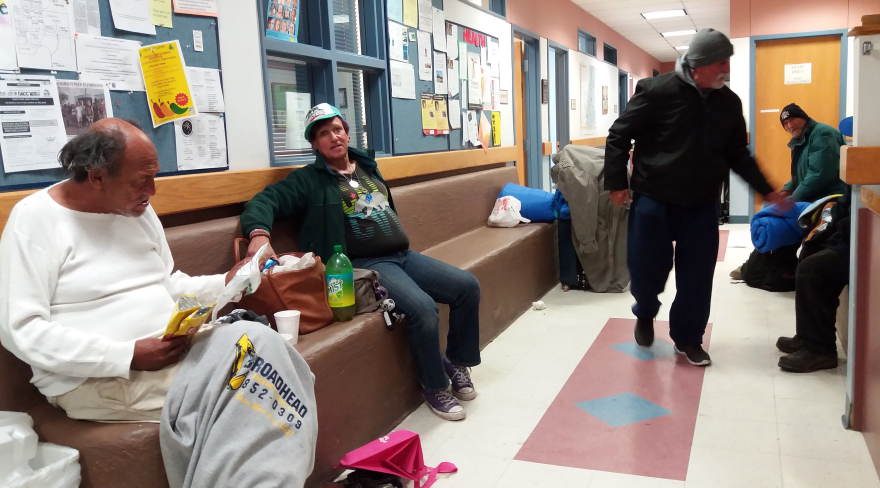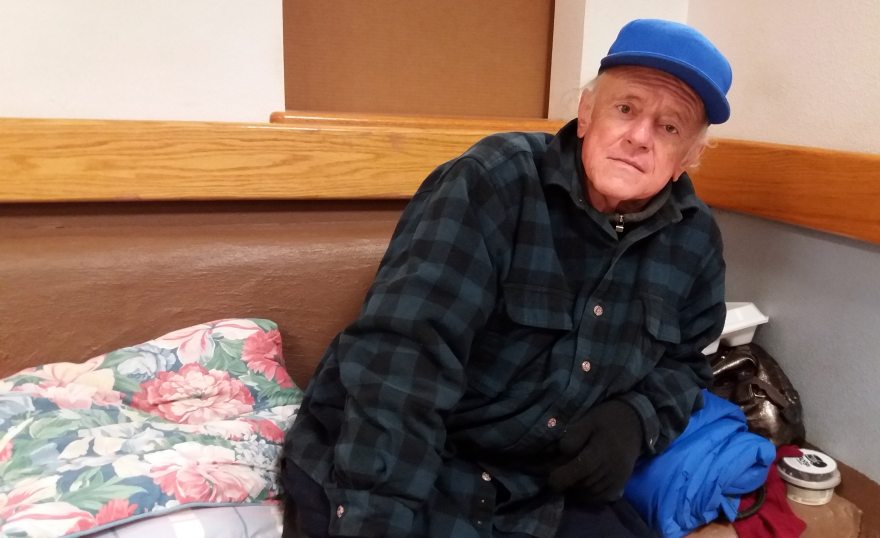http://youtu.be/gCNGQgI361Q
For many people who are homeless or at risk of becoming so, the Mesilla Valley Community of Hope is a sanctuary from the desert heat, monsoons and occasional snow.
The nonprofit Las Cruces shelter served nearly 3,000 clients in fiscal year 2019 and helped more than 300 people find transitional or permanent housing.
Kevin Moose is a longtime Community of Hope client.
Moose said after a series of family deaths and struggles with alcoholism, he arrived at the shelter in 2009 in search of help.
“They helped me, I was homeless for over 10 years. They helped me get housing. They paid for my housing for two years, or a little over two years. I also use the laundry facilities, which we are here in. They have free telephones for local and long distance,” Moose said. “The soup kitchen, which is in another building but it's part of the Community of Hope, El Caldito, I eat there all the time and that saves me $1,000 a month just because of eating free food–and it's very good food.”
Moose, who works part-time for Doña Ana Communities United, said he’s lived in Section 8 housing for three years. The Housing and Urban Development program helps to house low-income residents, the elderly and those with disabilities.
New Mexico received nearly $8 billion in federal funding through 55 programs in fiscal year 2016. Of those funds, $75 million went to Section 8 housing choice vouchers, according to George Washington University’s Counting for Dollars 2020 project.
Locally, the Mesilla Valley Public Housing Authority administers the Section 8 program. Community of Hope Executive Director Nicole Martinez said there are other important federal programs that complement Section 8.
“One of the most important programs that helps us here at Community of Hope is the Continuum of Care program. It's a HUD-funded program that allows us to work with people experiencing homelessness while they're currently on the streets as well as providing rental assistance and staff support for those who are experiencing homelessness or who are newly-housed. So, having Census information on HUD Continuum of Care programs is critical for us providing those services,” Martinez said.

New Mexico is a rural state with high rates of poverty. For that reason, Census organizers consider it the most vulnerable state to undercount.
The Census Bureau will spend three days counting people experiencing homelessness. That means counting people in shelters and soup kitchens as well as outdoor locations–think on the street, in parks, under bridges and in tent camps.
Martinez said finding those who are homeless when the Census takes place can be tough.
But it’s even tougher to lose out on crucial dollars due to an undercount. Martinez said the Community of Hope received a $10,000 grant to boost outreach efforts. She said the money, awarded by Census outreach group NM Counts 2020, will help the shelter host two education fairs planned for Feb. 26 and March 23 from 9 to 11 a.m.
“We also have been in constant contact with the Census enumerators to make sure that this is a Census site this year. So, we will have people on our campus at Camp Hope going throughout the community, providing outreach to make sure that we are counting as many people as possible to make sure that their voices are heard, that we are bringing in money to help as much and as many people as we can,” Martinez said.
Whether or not there’s a roof over your head, everybody needs help in times of trouble. Census data helps fund public safety programs like fire and emergency services.
To meet demand, Las Cruces fire officials said it’s critical to count everyone.

The Las Cruces Fire Department received two federal grants totaling more than $1 million in 2018. The Staffing for Adequate Fire and Emergency Response, or SAFER grant, is helping fund nine new firefighter positions for three years and staff a third emergency squad unit.
Additionally, a grant from the Assistance to Firefighters program sent a dozen firefighters through paramedic training at Doña Ana Community College.
Deputy Fire Chief Jason Smith said the fire department uses Census population figures to project growth in the City. But he said an undercount may result in fewer resources and longer response times.
“If you call for help, instead of having something like a six-minute response time, you may have to wait seven or eight minutes. Because the unit that was supposed to be in your area for call response is already on another call, because we don't have enough resources in the system because of the growth,” Smith said. “So, we need to be able to predict that and have enough resources on hand so that response times are as short as possible–and we have adequately trained staff and people on the engines and trucks to respond.”

Like local first responders, the Community of Hope is a lifesaver for people like Kevin Moose. To ensure everyone is counted, Moose said he signed up to be a Census worker.
“Everybody needs to be counted. Because one of the main reasons for it is to find out how many people are in America, but also how many people that it helps. Everybody at the Community of Hope will be counted one way or another, even if we have to drag 'em out of a ditch somewhere. As long as they're breathing, they're getting counted. Guarantee it. And the Gospel Rescue Mission across the street, they will all be counted. No matter what,” Moose said.
Regardless of the Census count, fighting homelessness is likely to remain a priority. From 2018 to 2019, HUD reports homelessness increased 27 percent in New Mexico–the highest percentage increase in the country.



